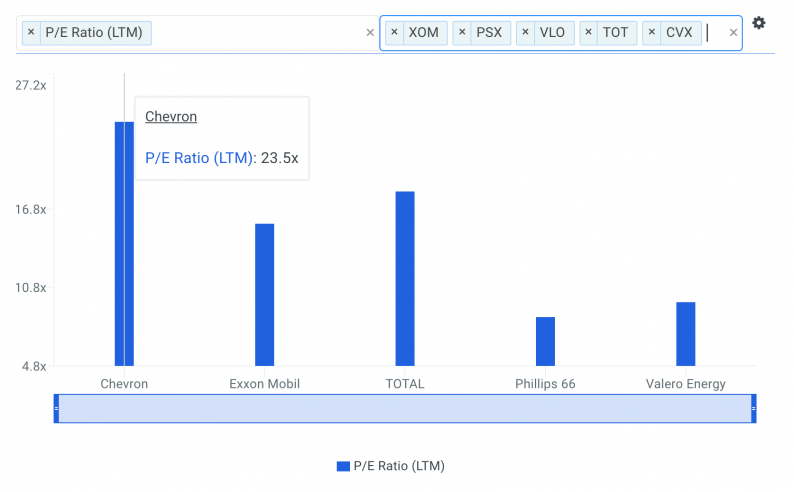Chevron Corporation (NYSE: CVX) trades at a P/E multiple of 23.5x, which is higher than the Energy sector median of 15.6x. While this makes CVX appear like a stock to avoid or sell if you own it, you might change your mind after gaining a better understanding of the assumptions behind the P/E ratio. In this article, I will break down what the P/E ratio is, how to interpret it and what to watch out for.
Understanding Valuation Multiples and the P/E Ratio
A Multiples Valuation, also known as a Comparable Companies Analysis, determines the value of a subject company by benchmarking the subject’s financial performance against similar public companies (Peer Group). We can infer if a company is undervalued or overvalued relative to its peers by comparing metrics like growth, profit margin, and valuation multiples.
A P/E Multiple is a valuation ratio that indicates the multiple of earnings investors are willing to pay for one share of a company:
P/E Multiple = Stock Price ÷ Earnings Per Share
The P/E ratio is not meant to be viewed in isolation and is only useful when comparing it to other similar companies. Since it is expected that similar companies have similar P/E ratios, we can come to some conclusions about the stock if the ratios are different. I compare Chevron’s P/E multiple to those of Exxon Mobil Corporation (NYSE: XOM), TOTAL S.A. (NYSE: TOT), Phillips 66 (NYSE: PSX) and Valero Energy Corporation (NYSE: VLO) in the chart below.

source: finbox.io Benchmarks: P/E Multiples
Since Chevron’s P/E of 23.5x is higher than the median of its peers (12.7x), it means that investors are paying more than they should for each dollar of CVX’s earnings. As such, our analysis shows that CVX represents an overvalued stock. In fact, finbox.io’s P/E Multiple Model calculates a fair value of $83.27 per share which implies -27.8% downside.














Leave A Comment